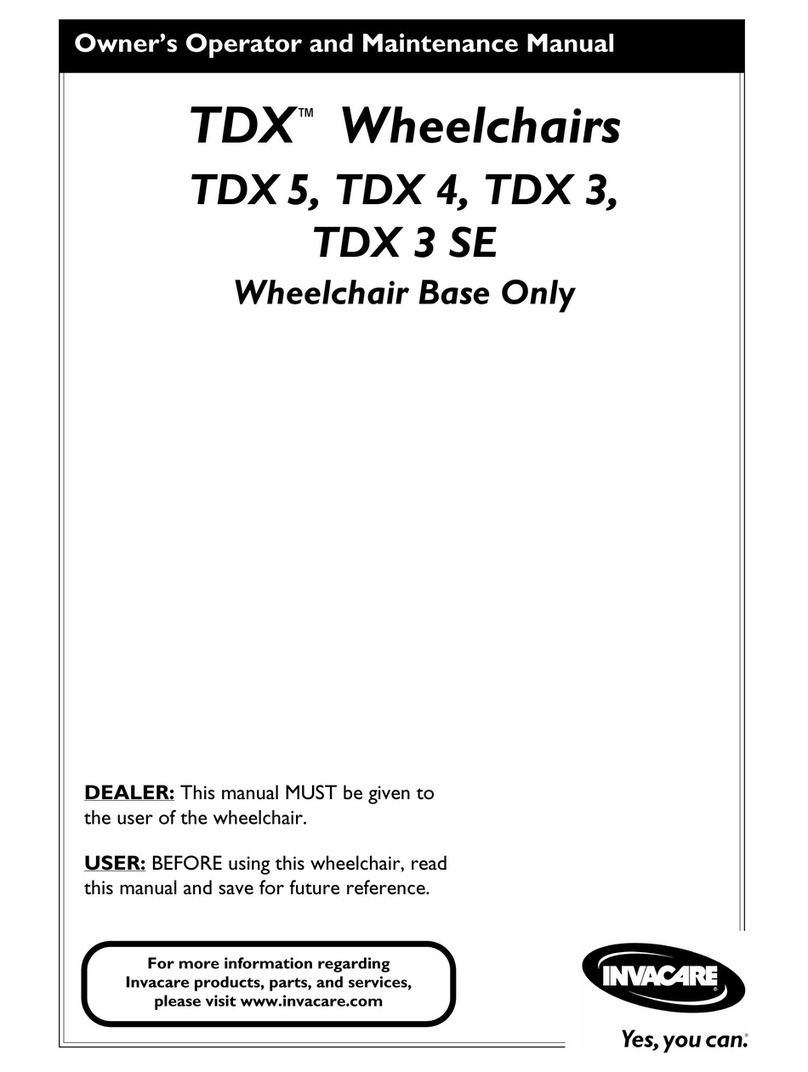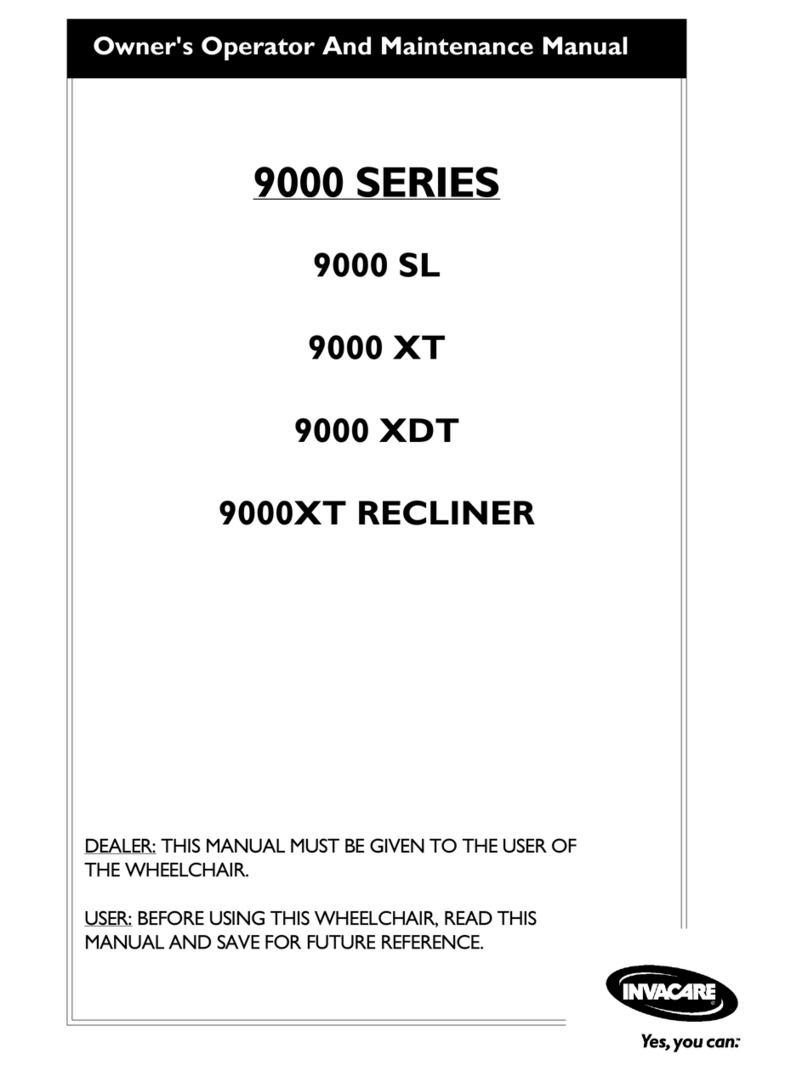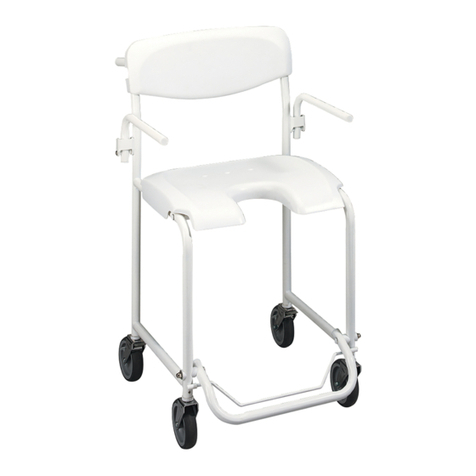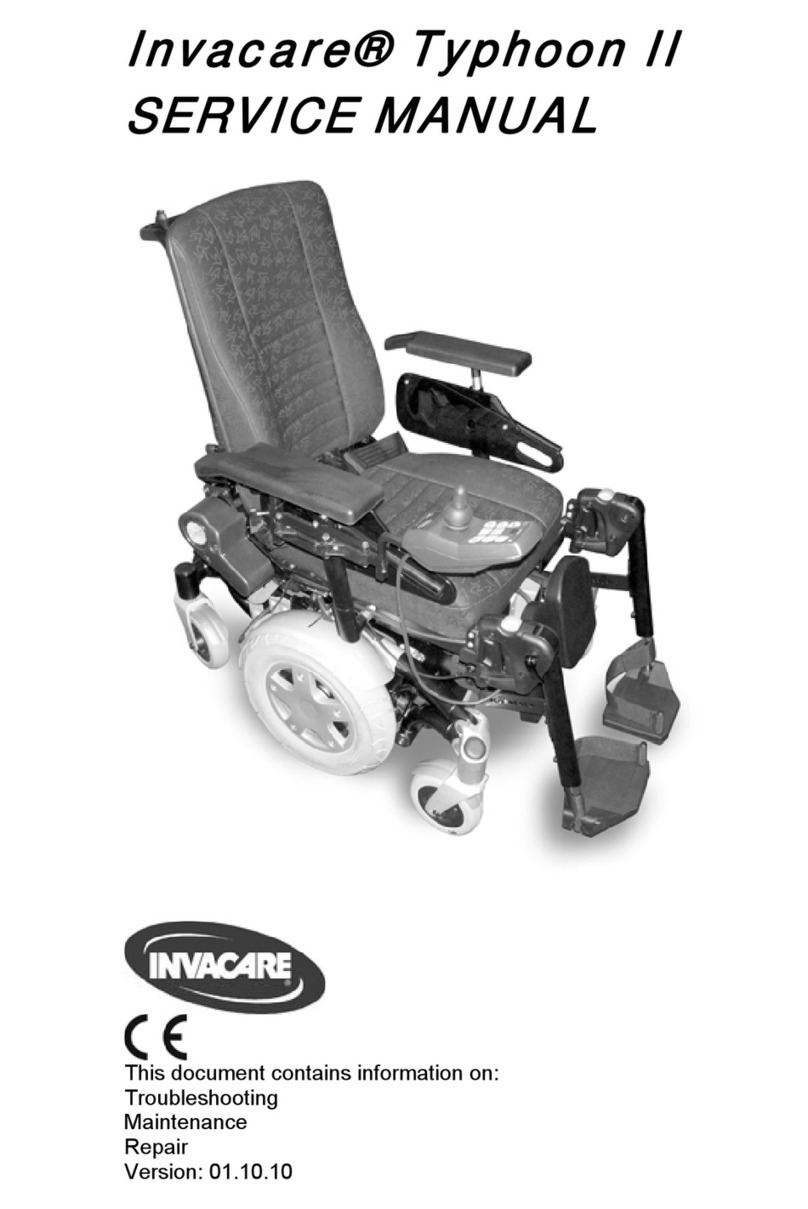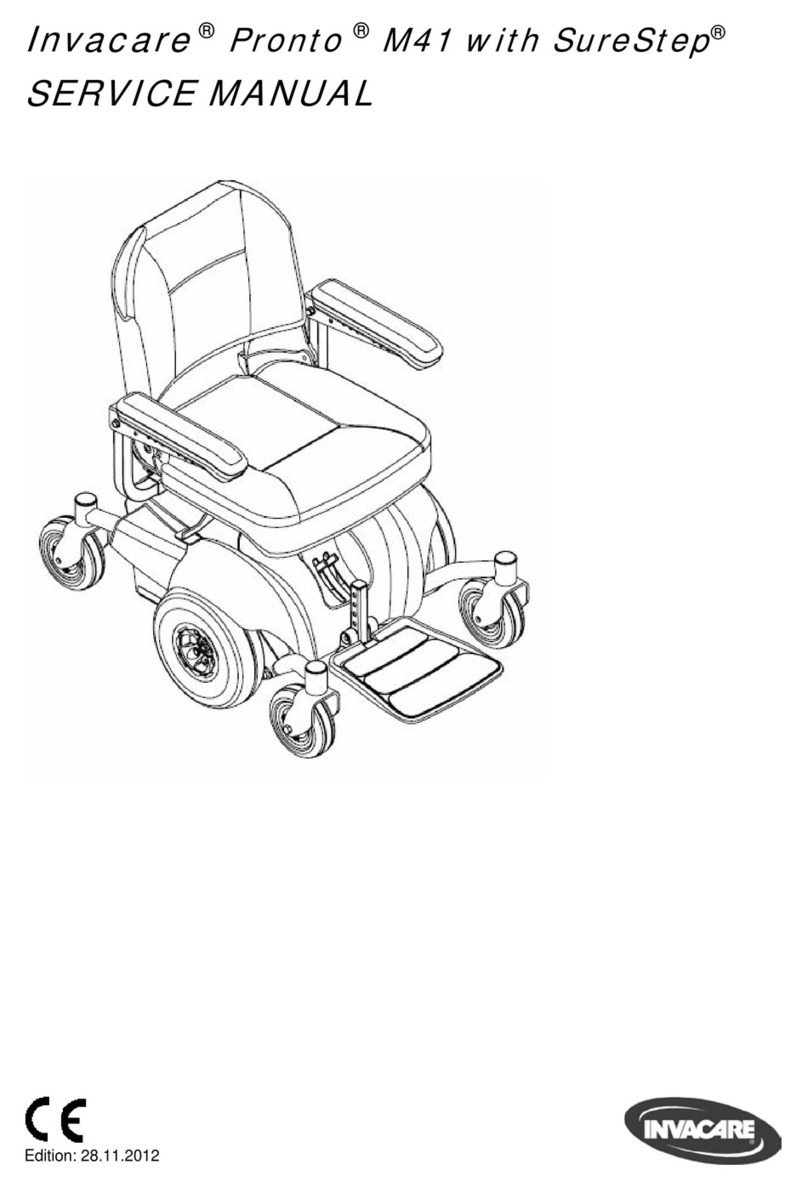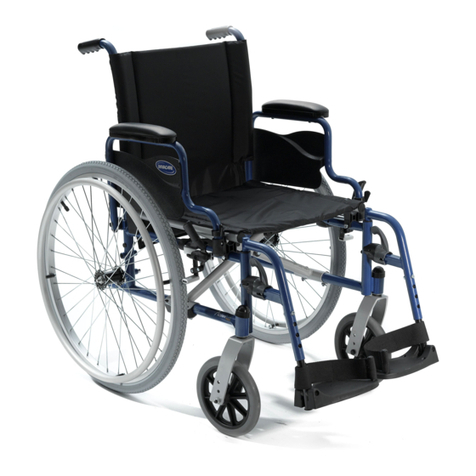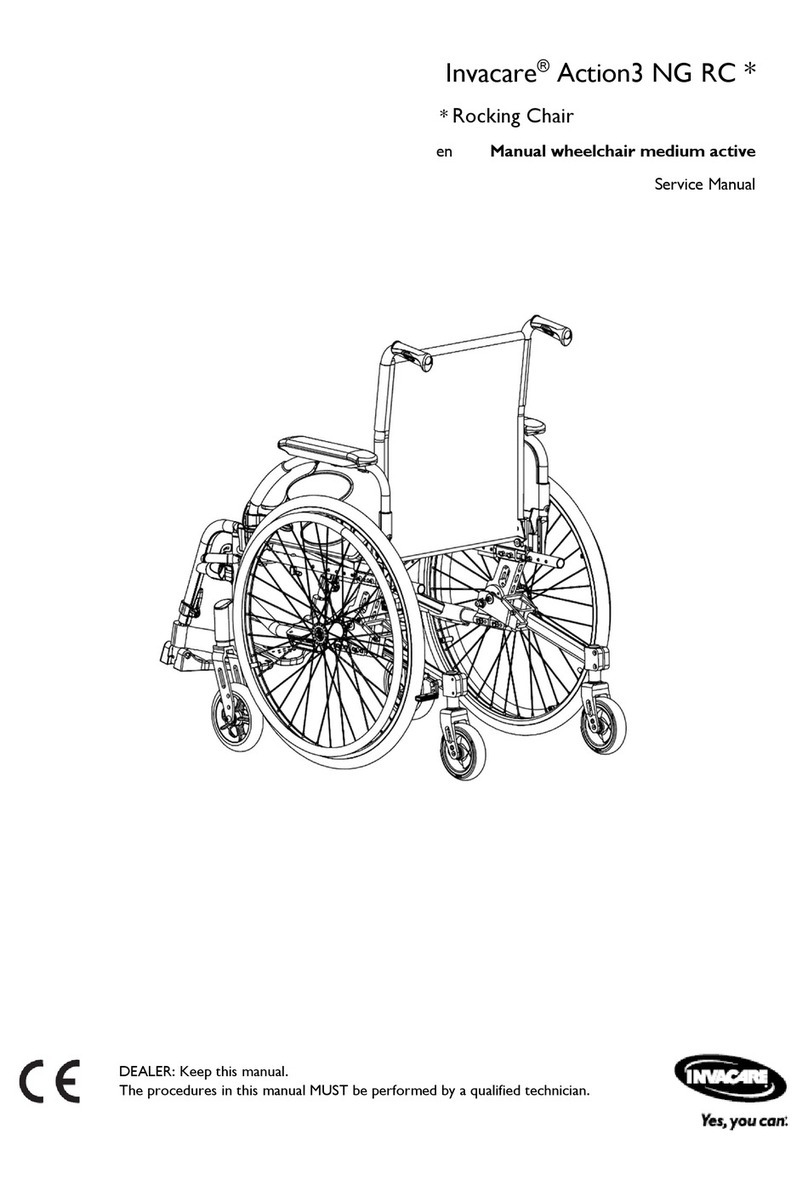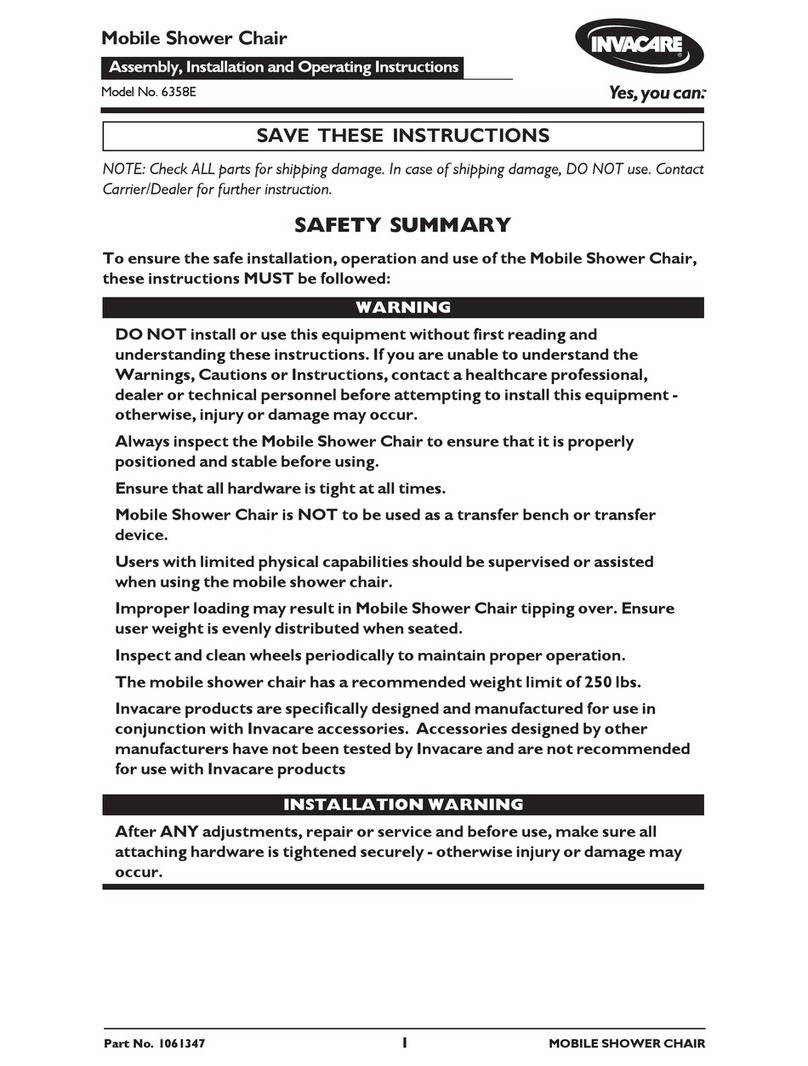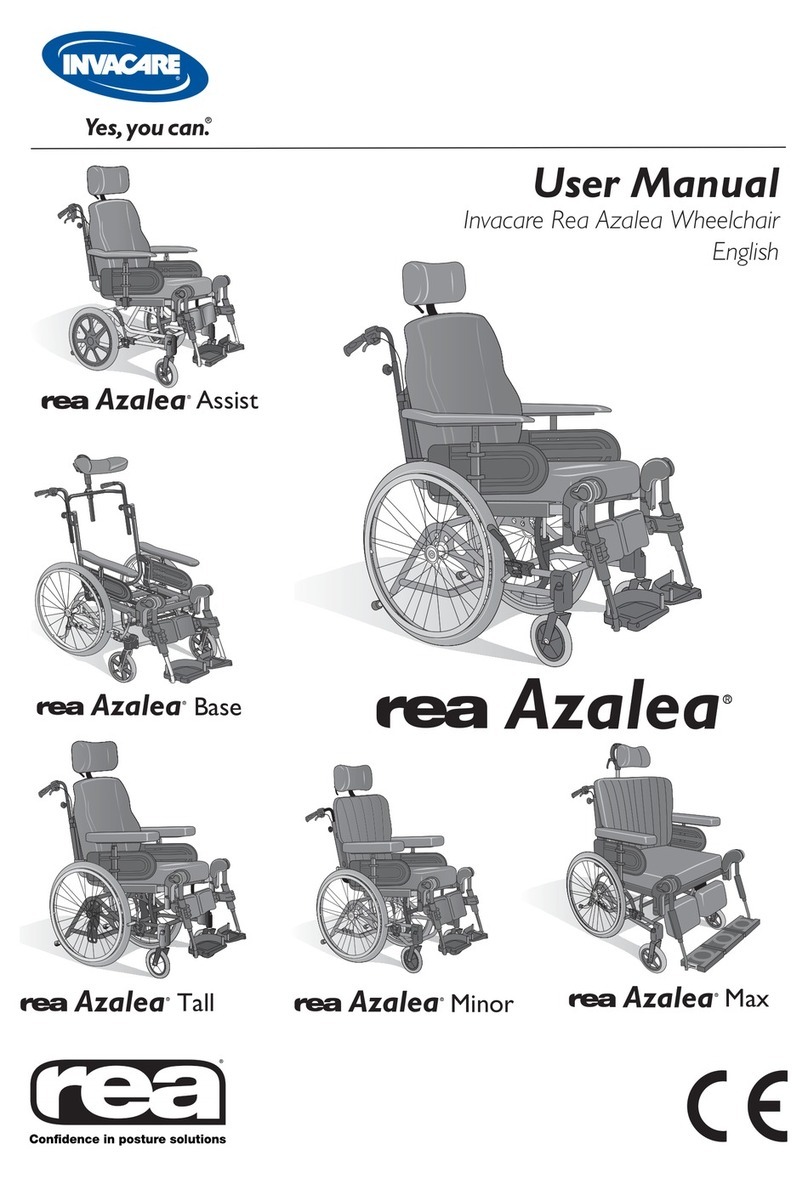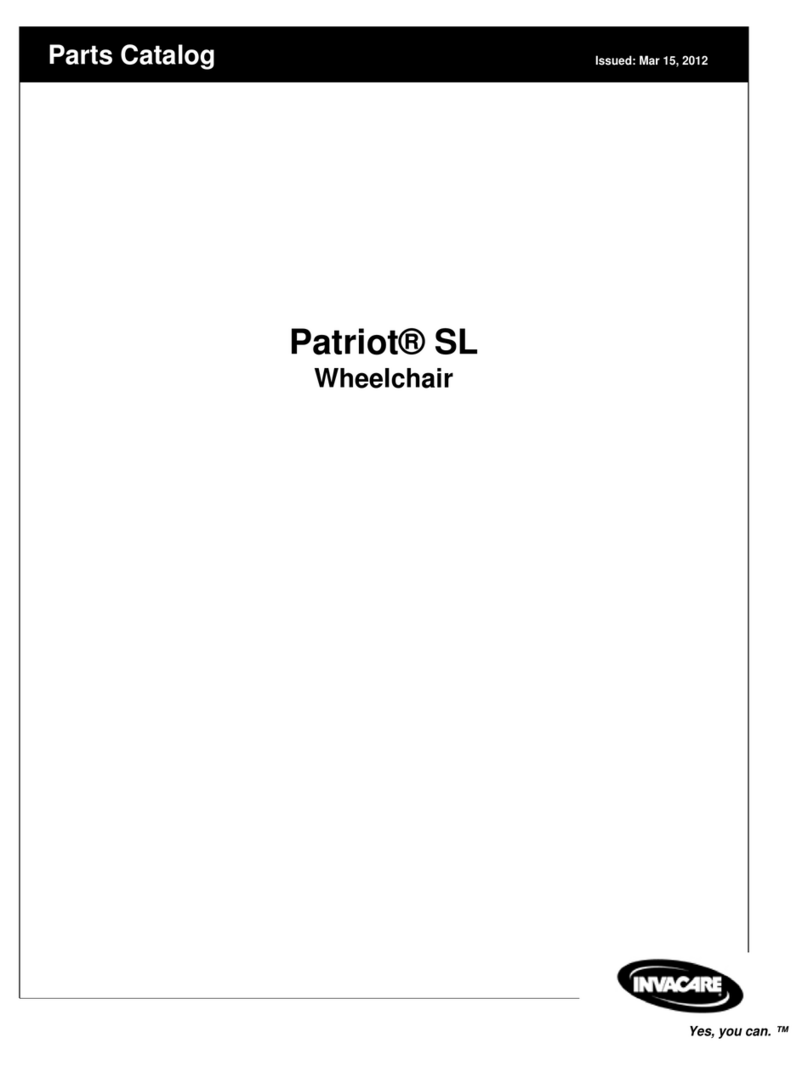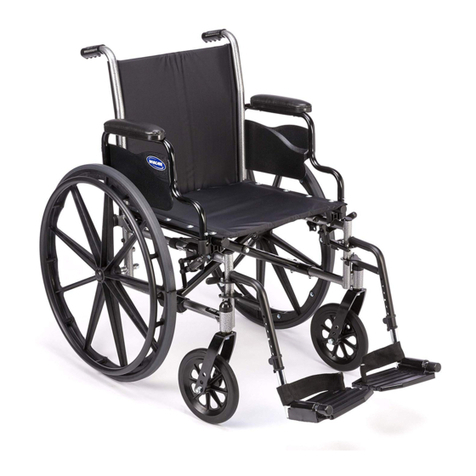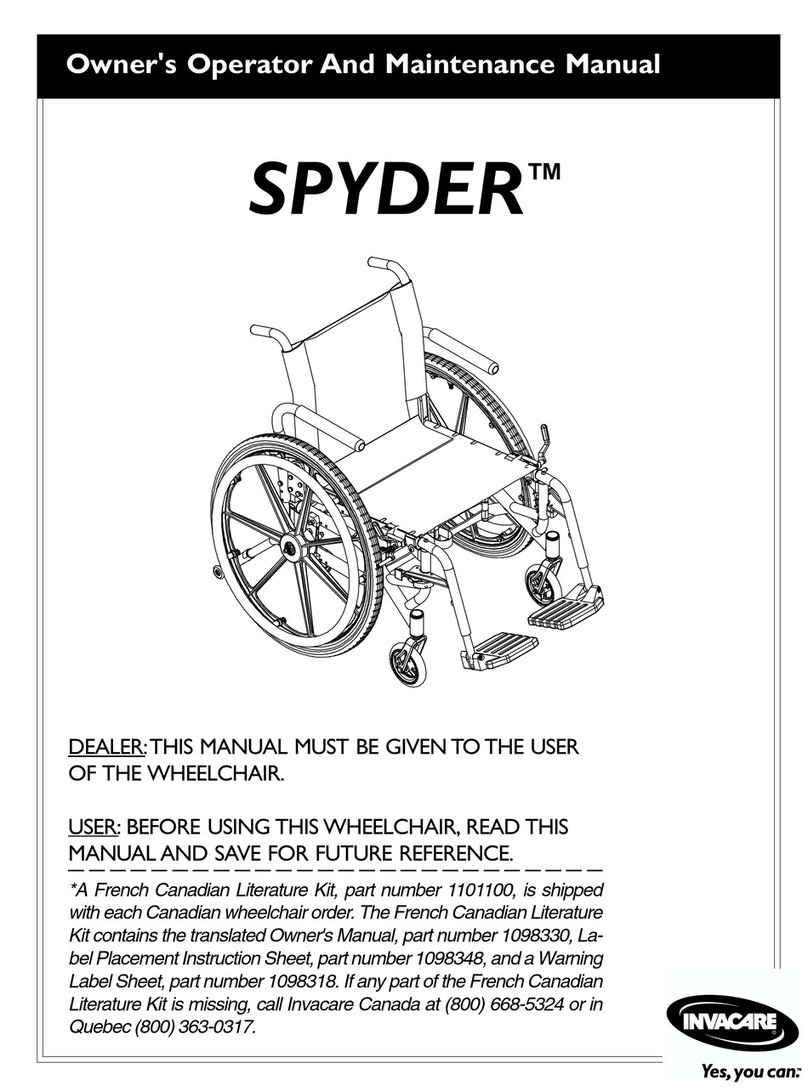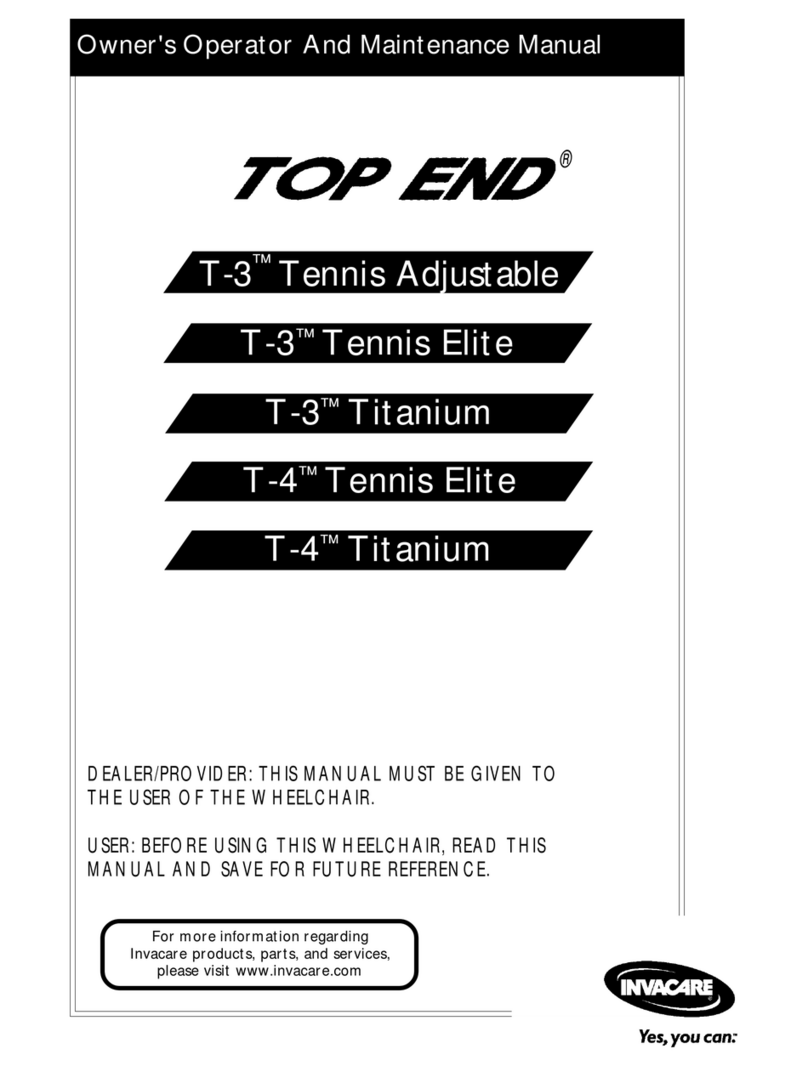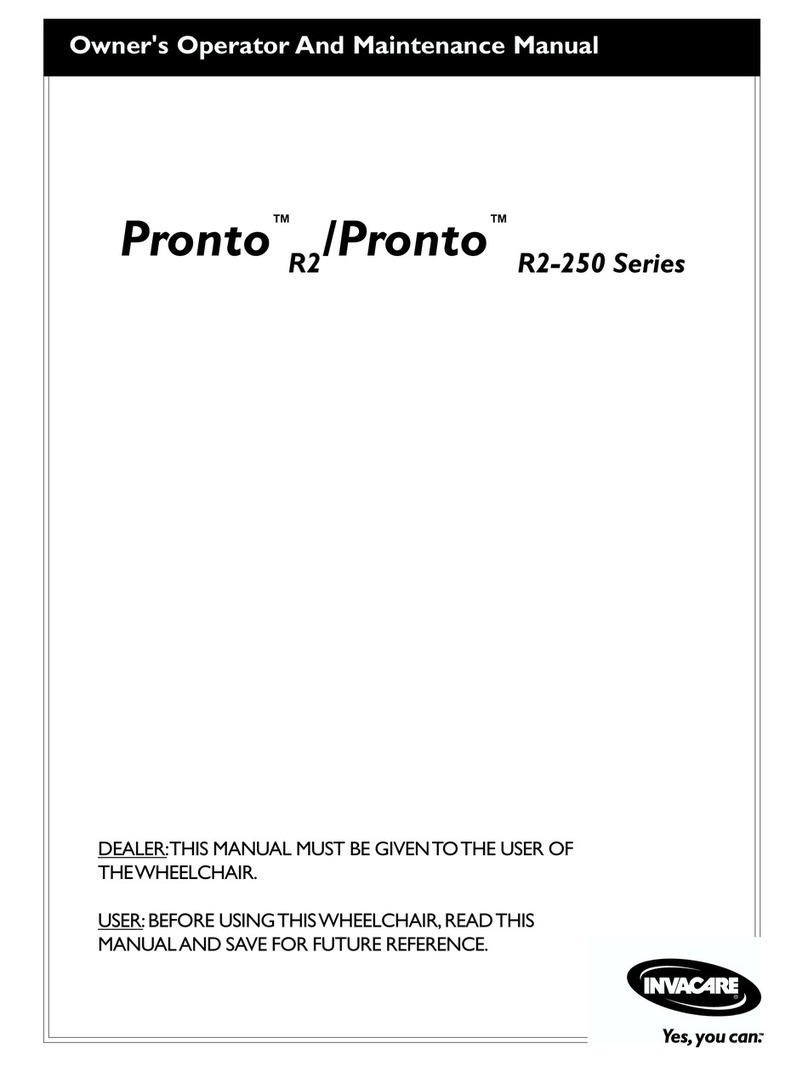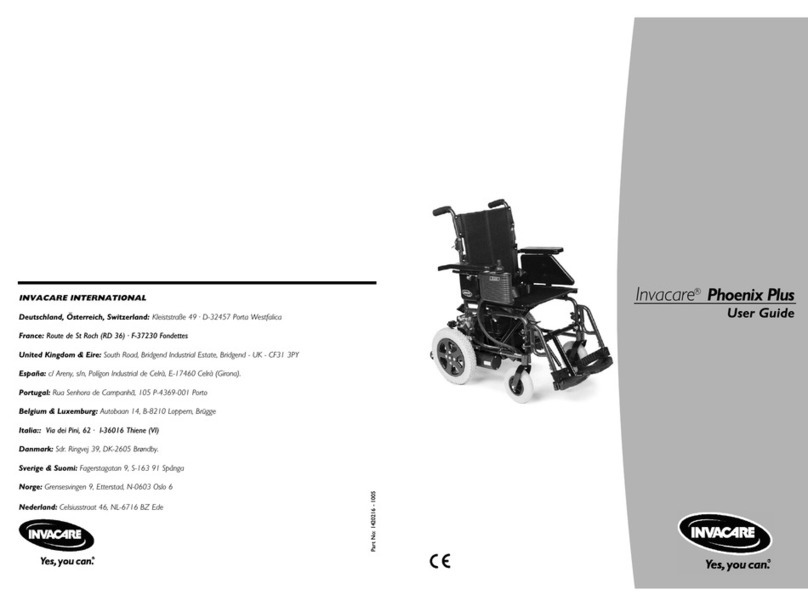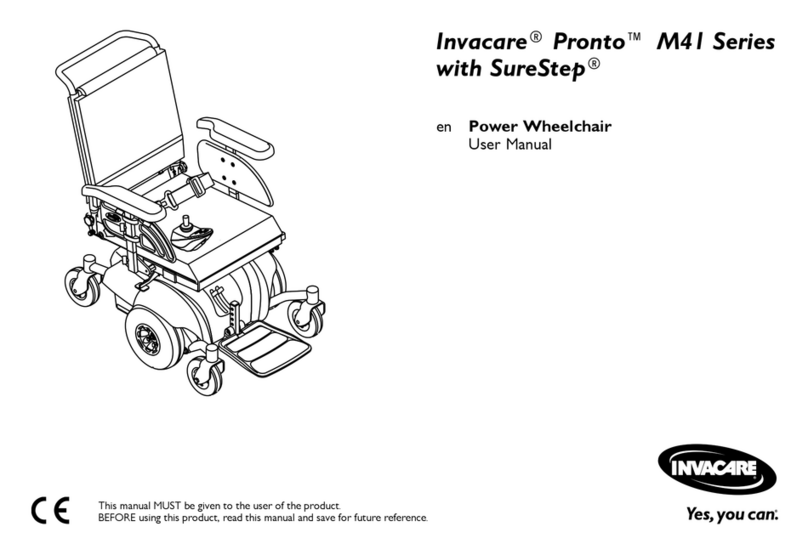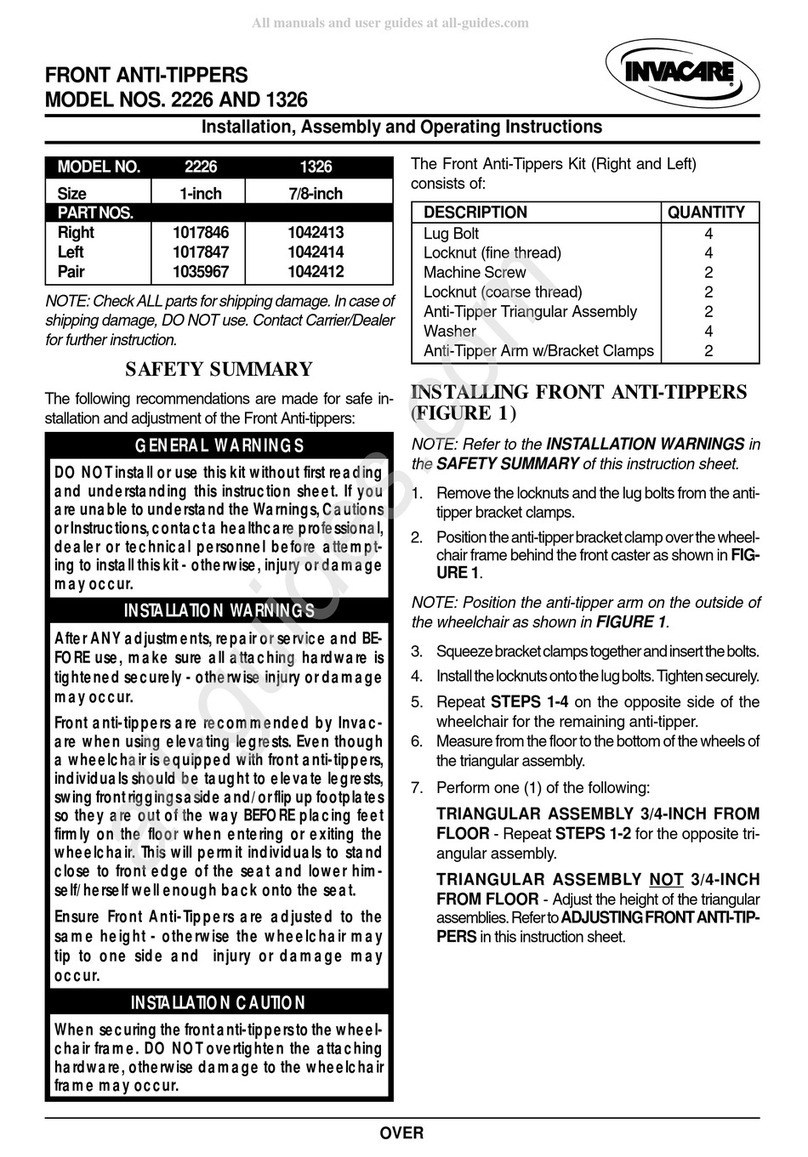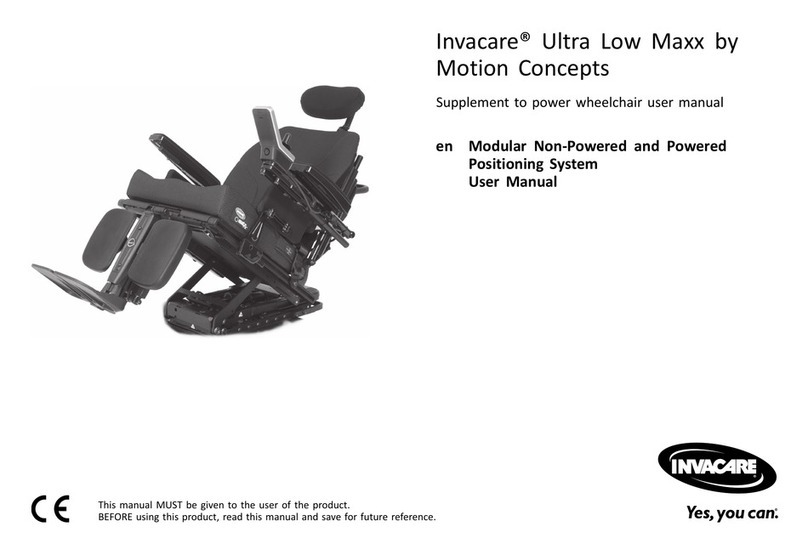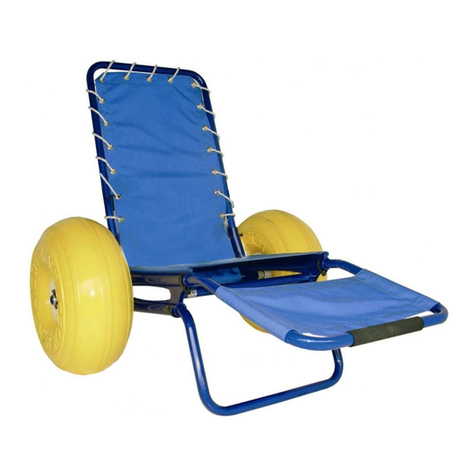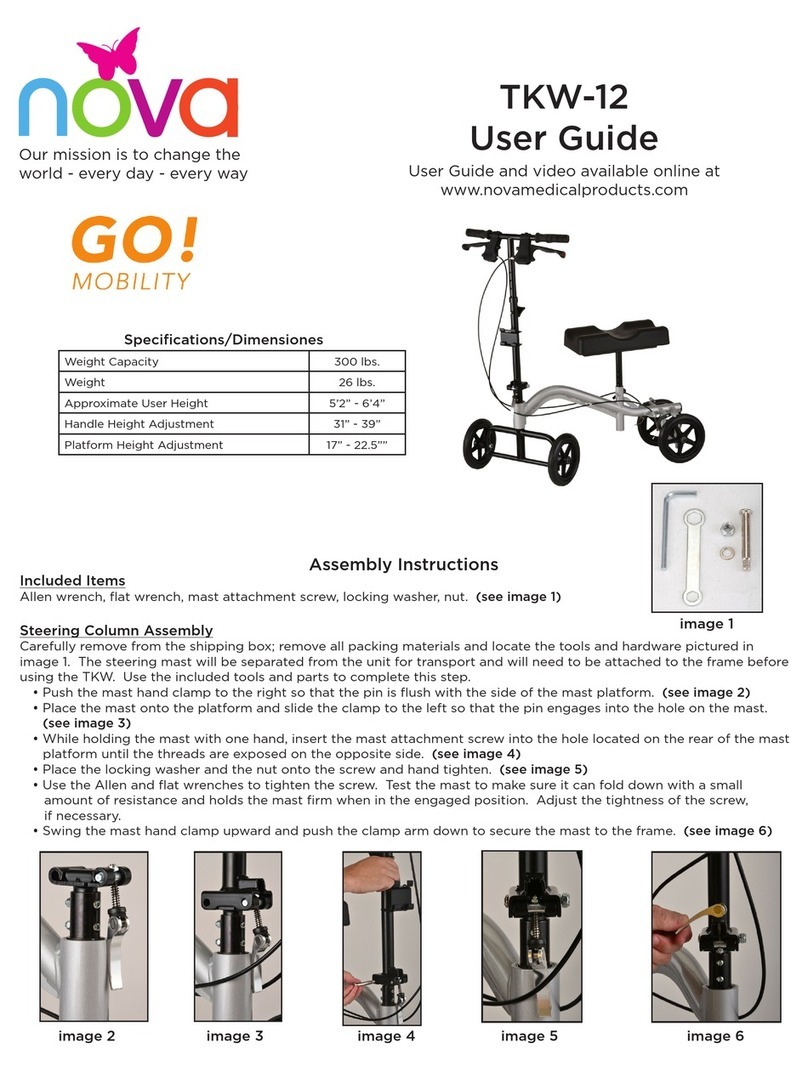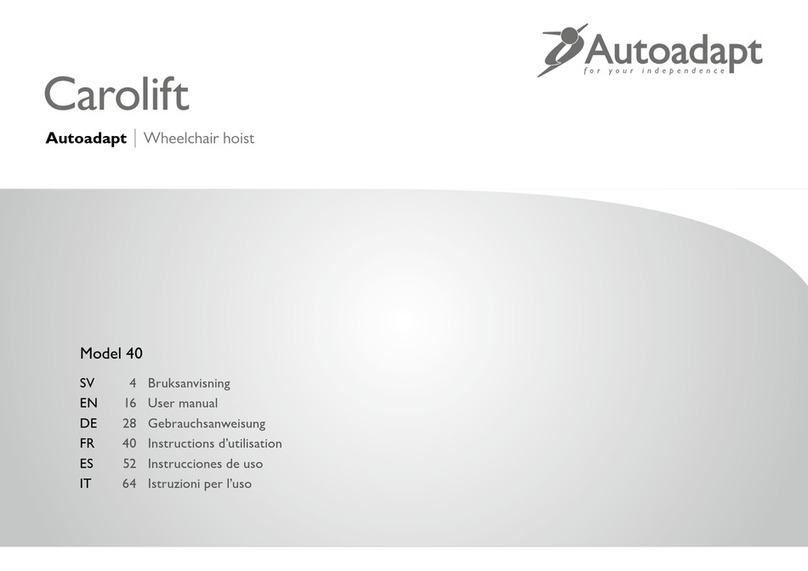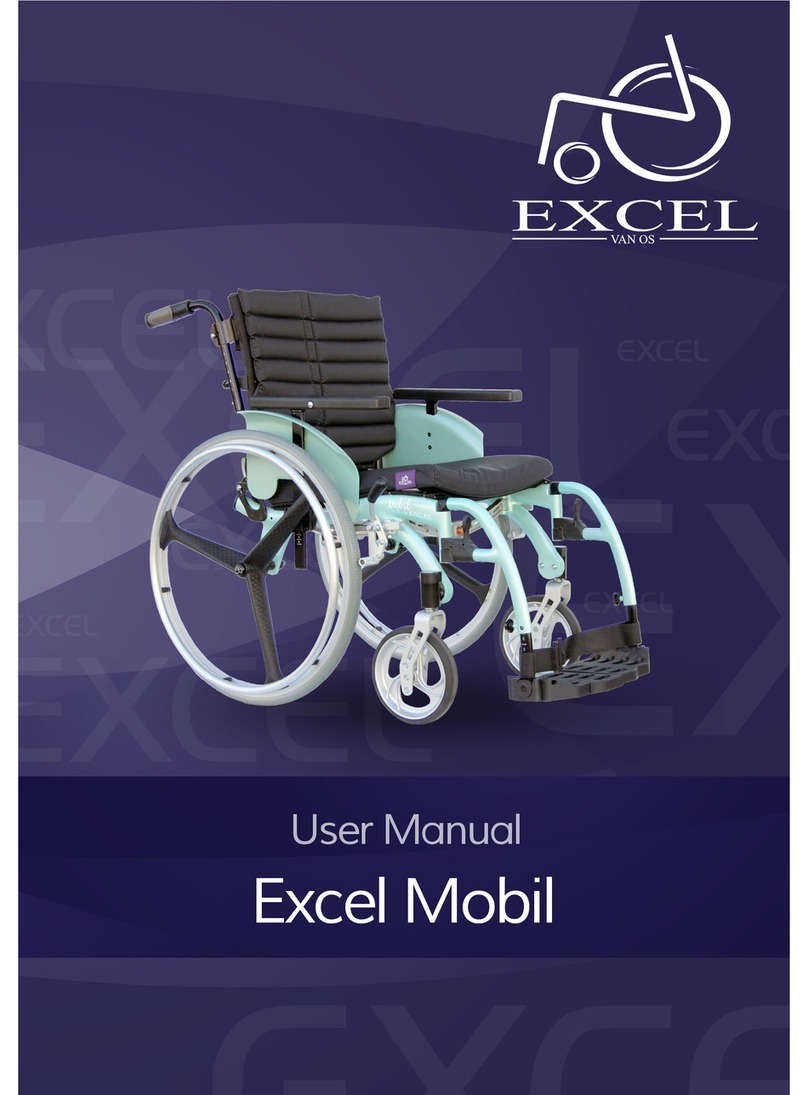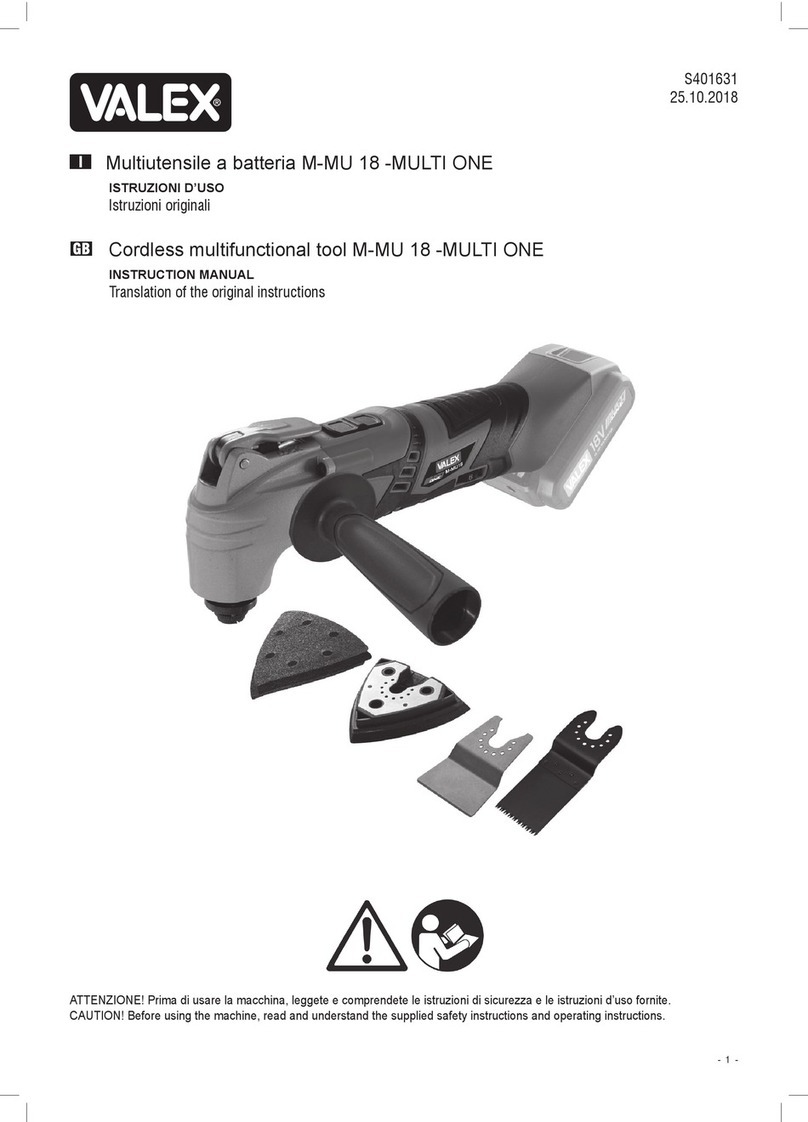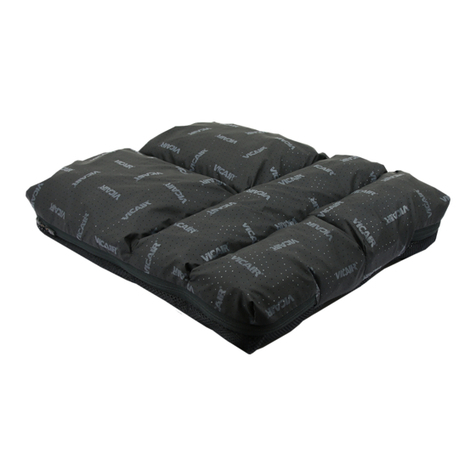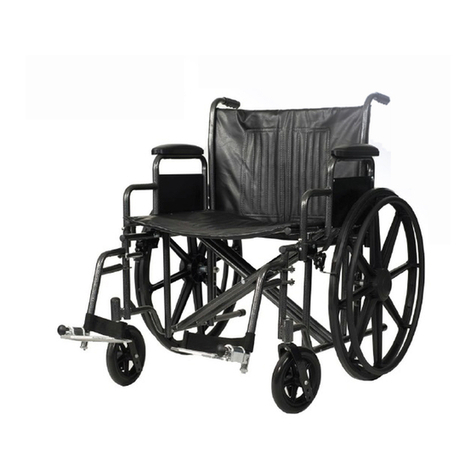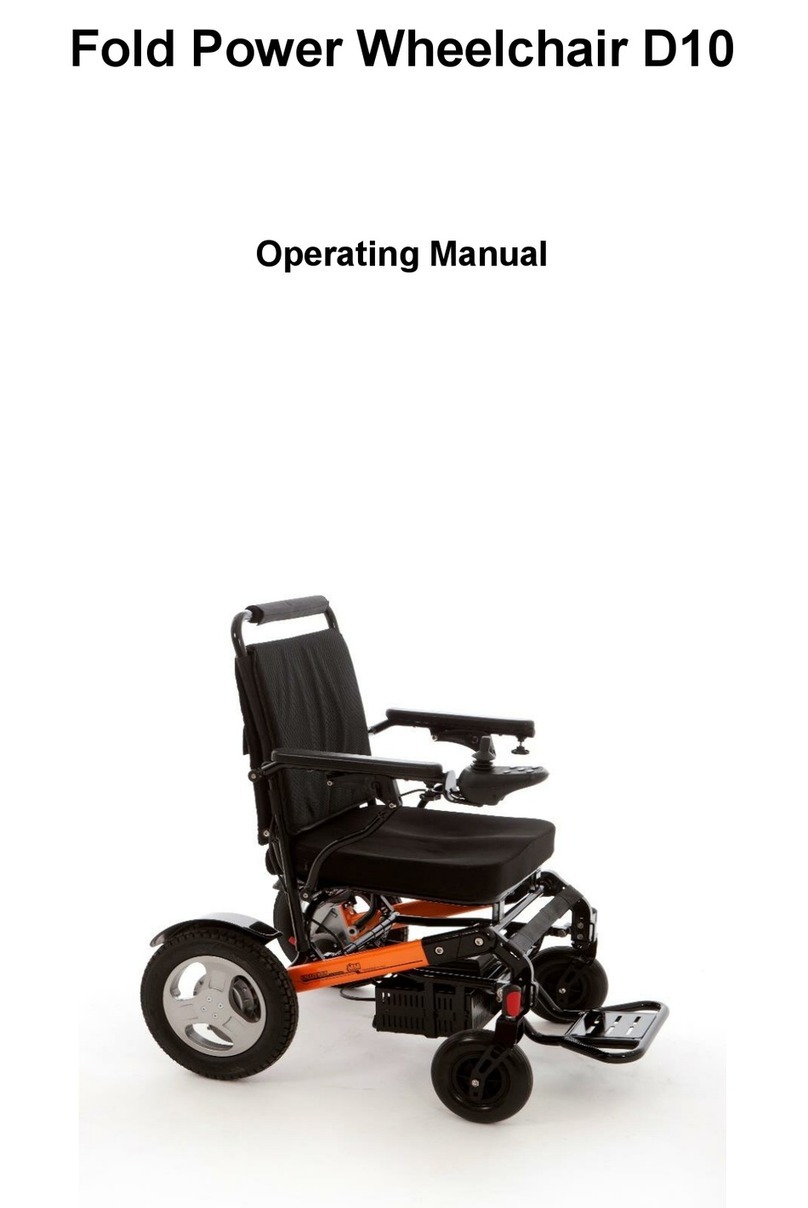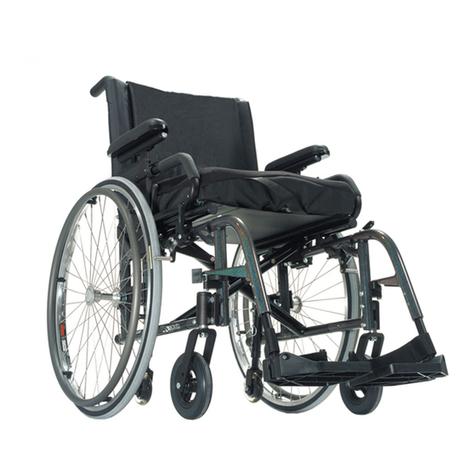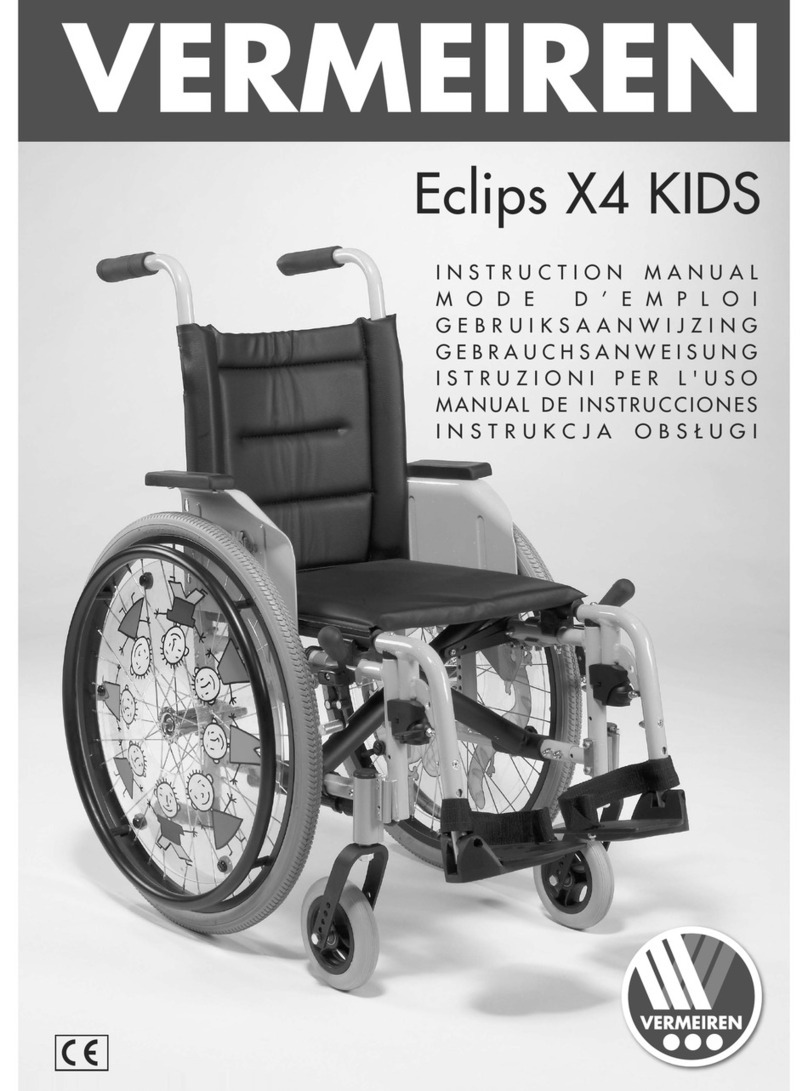
SECTION 2—EMI INFORMATION
Part No 1110532 7MK5
™NX™Electronics
SECTION 2—EMI INFORMATION
WARNING
CAUTION: IT IS VERY IMPORTANT THAT YOU READ THIS INFORMATION
REGARDING THE POSSIBLE EFFECTS OF ELECTROMAGNETIC
INTERFERENCE ON YOUR POWERED WHEELCHAIR.
Electromagnet c Interference (EMI) From Rad o Wave Sources
Powered wheelcha rs and motor zed scooters ( n th s text, both w ll be referred to
as powered wheelcha rs) may be suscept ble to electromagnet c nterference (EMI),
wh ch s nterfer ng electromagnet c energy (EM) em tted from sources such as
rad o stat ons, TV stat ons, amateur rad o (HAM) transm tters, two way rad os, and
cellular phones. The nterference (from rad o wave sources) can cause the powered
wheelcha r to release ts brakes, move by tself, or move n un ntended d rect ons. It
can also permanently damage the powered wheelcha r's control system. The
ntens ty of the nterfer ng EM energy can be measured n volts per meter (V/m).
Each powered wheelcha r can res st EMI up to a certa n ntens ty. Th s s called ts
" mmun ty level." The h gher the mmun ty level, the greater the protect on. At th s
t me, current technology s capable of ach ev ng at least a 20 V/m mmun ty level,
wh ch would prov de useful protect on from the more common sources of rad ated
EMI.
There are a number of sources of relat vely ntense electromagnet c f elds n the
everyday env ronment. Some of these sources are obv ous and easy to avo d.
Others are not apparent and exposure s unavo dable. However, we bel eve that by
follow ng the warn ngs l sted below, your r sk to EMI w ll be m n m zed.
The sources of rad ated EMI can be broadly class f ed nto three types:
1) Hand-held Portable transce vers (transm tters-rece vers w th the antenna
mounted d rectly on the transm tt ng un t. Examples nclude: c t zens band (CB)
rad os, "walk e talk e", secur ty, f re and pol ce transce vers, cellular telephones,
and other personal commun cat on dev ces).
NOTE: Some cellular telephones and similar devices transmit signals while they are ON,
even when not being used.
2) Med um-range mob le transce vers, such as those used n pol ce cars, f re trucks,
ambulances and tax s. These usually have the antenna mounted on the outs de of
the veh cle; and
3) Long-range transm tters and transce vers, such as commerc al broadcast
transm tters (rad o and TV broadcast antenna towers) and amateur (HAM)
rad os.
NOTE: Other types of hand-held devices, such as cordless phones, laptop computers,
M/FM radios, TV sets, CD players, cassette players, and small appliances, such as elec-
tric shavers and hair dryers, so far as we know, are not likely to cause EMI problems to
your powered wheelchair.
